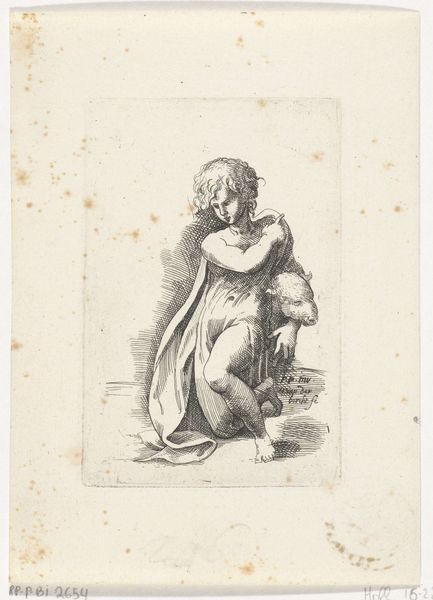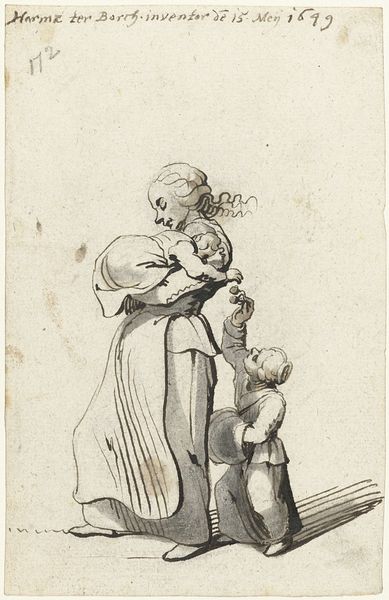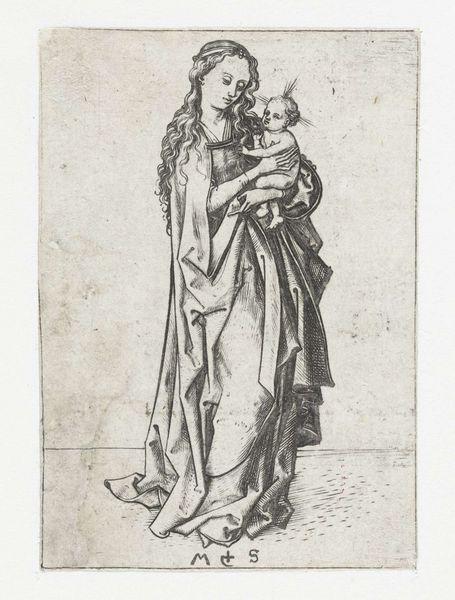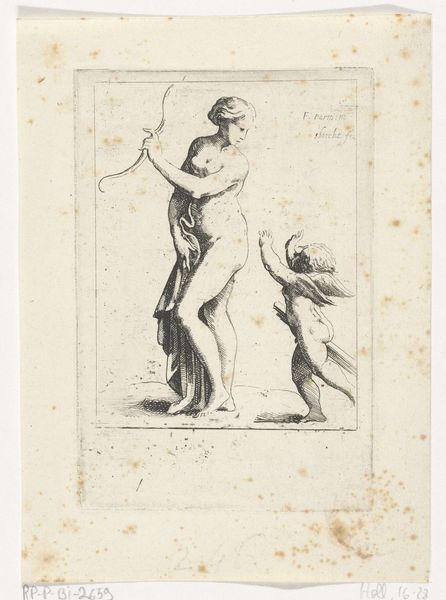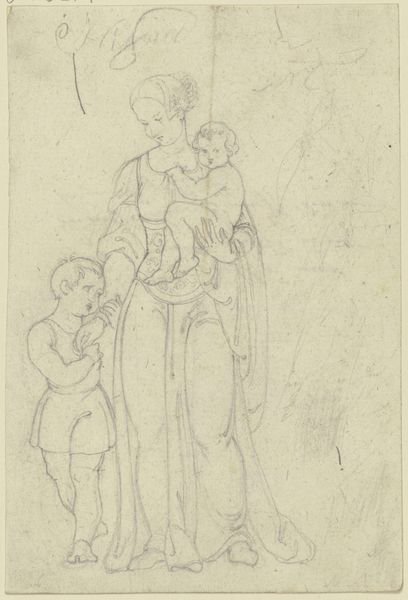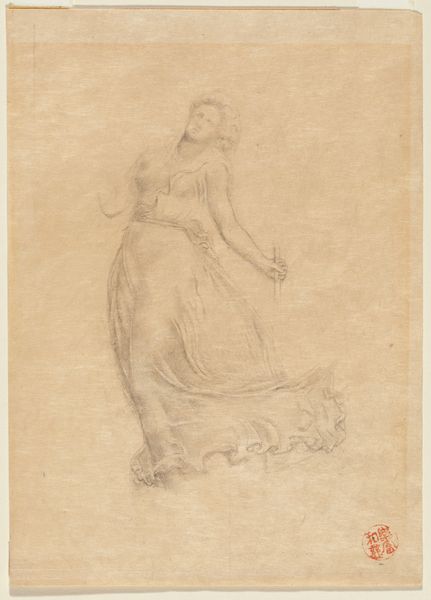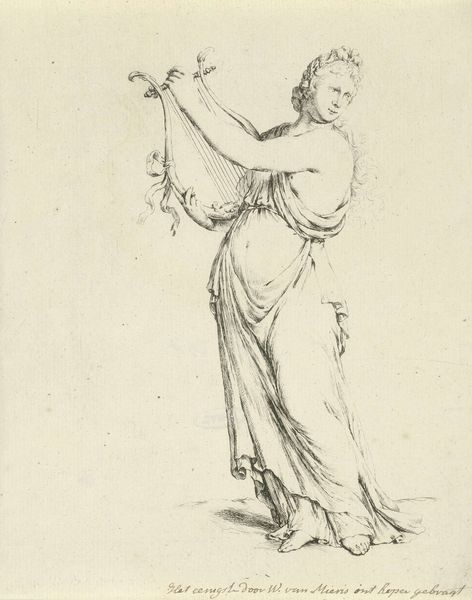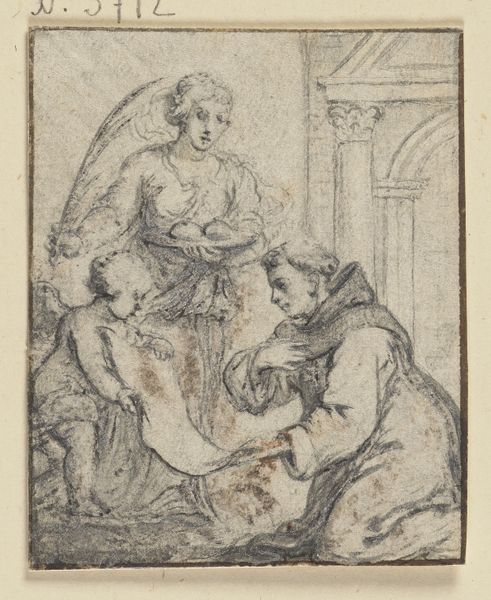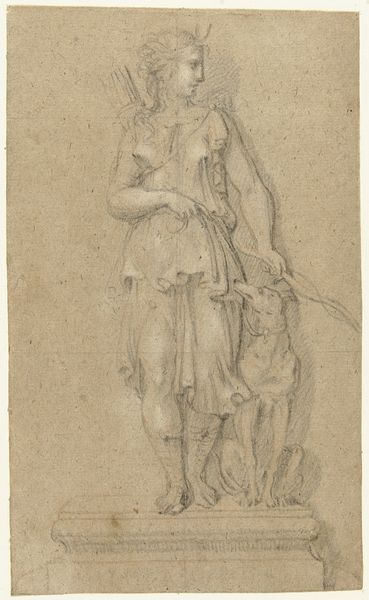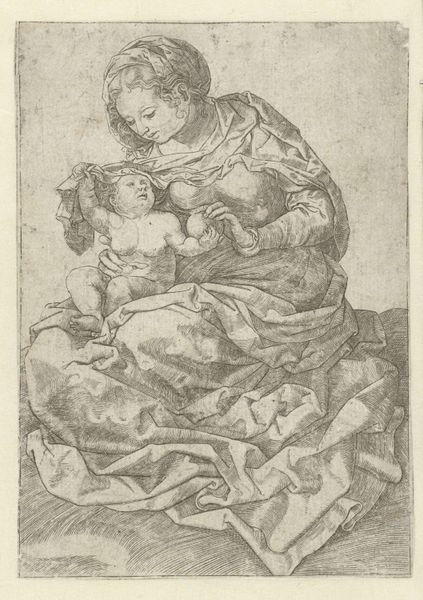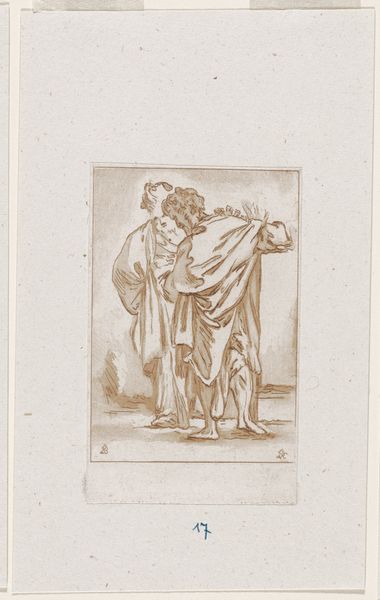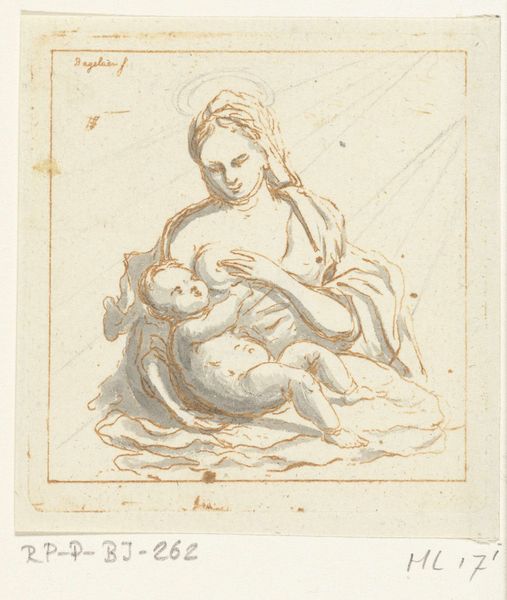
Vrouw helpt een kind met een tuigje om te leren lopen Possibly 1653
0:00
0:00
harmenterborch
Rijksmuseum
drawing, pencil
#
portrait
#
drawing
#
dutch-golden-age
#
pencil sketch
#
figuration
#
pencil
#
genre-painting
#
realism
Dimensions: height 95 mm, width 70 mm
Copyright: Rijks Museum: Open Domain
Editor: This is "Vrouw helpt een kind met een tuigje om te leren lopen," possibly from 1653, by Harmen ter Borch, made with pencil. There's such a lovely simplicity to the scene – almost like a fleeting moment captured. What strikes you when you look at this drawing? Curator: The enduring image of a mother teaching her child to walk speaks volumes, doesn't it? The walking harness, itself, is symbolic. What does that harness represent to you? Is it constraint? Or guidance? Or maybe both? Editor: That’s a great question. It feels like it could go either way. Maybe it reflects how society viewed childhood and development at that time? Curator: Precisely. Notice how the artist renders the mother's gaze – downward, protective, yet almost melancholic. The cultural memory of motherhood is so complex. What emotions does the child’s form evoke? Editor: I see vulnerability, but also determination. There’s a weightiness to how the artist sketched the shadow of the harness, reinforcing that idea of support and restriction. Curator: Yes! It anchors the child, but it also implies a journey, the start of independence. Ter Borch uses simple lines to convey so much psychological depth. We read into it our contemporary ideas of freedom versus safety, even now. Editor: It’s fascinating how much this simple drawing holds. Thanks for pointing out the multiple layers. Curator: My pleasure! Every line tells a story, and these stories keep shifting with time.
Comments
No comments
Be the first to comment and join the conversation on the ultimate creative platform.
